NHL Hall of Famer Joe Sakic never delivered much in the way of on-ice heartbreak to the New York Rangers, the star center spending 13 of his 20 NHL seasons in the Western Conference and thus mostly facing them sparingly during the regular season. In his only playoff matchup with the Blueshirts, Sakic’s top-seeded Quebec Nordiques were stunned in the opening round in six games in 1995 by the defending Stanley Cup champion, Mark Messier-led Rangers.
And while Sakic recorded more than a point per game against the Rangers during the regular season, with 41 in 37 games, his 1.1 average in the matchup was less than his career mark of 1.2.
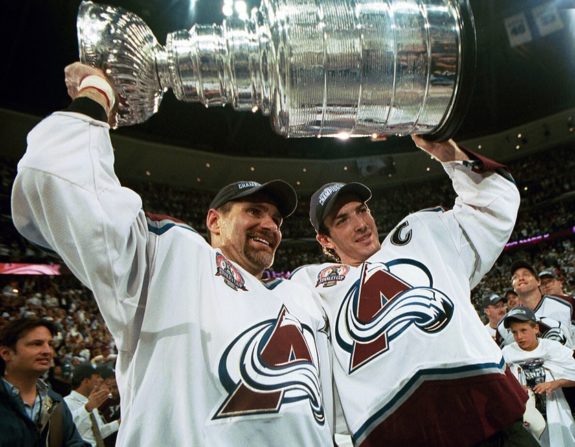
Yet a closer look at the sublime Sakic’s career reveals some unfortunate intersections with the Rangers that represent a painful reminder of what could have been for the Blueshirts – missed opportunities that continue to haunt them now.
So let’s dive into No. 19’s brushes with Broadway, which began long before he led the Colorado Avalanche to two Stanley Cups and piled up 1,641 points, ninth all-time, on his way to enshrinement in Toronto in 2012.
Rangers Miss on Sakic in 1987 NHL Entry Draft
The Rangers were hardly the only team to misjudge the potential of Sakic, who had recorded 293 points in 136 games over two seasons with Swift Current of the Western Hockey League, at the 1987 Draft. Still, the experience had to be individually excruciating for each team that passed on him before Quebec grabbed Sakic with its second pick of the first round, 15th overall.
A look back reveals this for the Blueshirts: With one of the NHL’s future all-time great offensive players available, the Rangers, drafting 10th that year, selected … Jayson More, a middling defenseman who played 15 games and recorded one assist for them, and went on to a 406-game career in which he totaled 72 points and a minus-78 rating.
Sakic debuted for Quebec in the 1988-89 season and began his splendid career with 62 points in 70 games, then totaled 102, 109, 94, 105 and 94 points over the next five seasons. The Nordiques’ move to Denver to become the Colorado Avalanche before the 1995-96 season – months after the Rangers briefly got the better of Sakic in the postseason – resulted in a Stanley Cup, with Sakic topping off his 120-point effort by winning the Conn Smythe Trophy as playoff MVP.
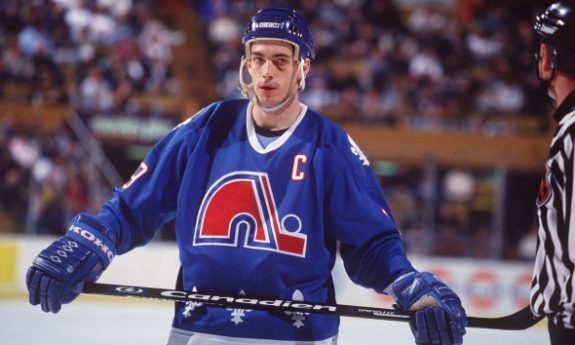
A Hart Trophy as league MVP and second championship followed in 2000-01, and the Avalanche captain since their inception would continue to produce at better than a point-per-game clip for seven more seasons before he retired after the 2008-09 season.
While passing on Mike Bossy twice during the 1977 draft represents the Rangers’ greatest draft failure, given the fact that he went to the archrival New York Islanders (coincidentally, also 15th overall), this misfire is close behind. Again, the Blueshirts were hardly the only team to grossly underrate Sakic that year, but that doesn’t make the experience of drafting the forgettable More instead any less agonizing.
You may also like:
- Rangers Have Reaped Major Successes From 4th Round of Draft
- 3 Lessons the Rangers Can Learn From Recent Playoff Failures
- Where Will College Free Agent Collin Graf Sign?
- Rangers’ Zac Jones Making the Most of Injuries to Defensemen
- Rangers Not Getting Typical March Mika Zibanejad This Season
Would Sakic, perhaps teaming with Messier starting in 1991-92 in a dynamic 1-2 center punch, have helped lead the Rangers to more than one Stanley Cup in the 1990s? We’ll of course never know – but it’s fair to say that their chances would likely have been significantly enhanced. The Blueshirts made five playoff appearances in the six seasons of Messier’s first go-round in New York, reaching two Eastern Conference Finals and winning it all in 1994. Might a second superstar center have meant even more deep playoff runs?
Rangers Unsuccessfully Sign Sakic to Offer Sheet in 1997
The Rangers had a chance to rectify their draft mistake 10 years later during the 1997 offseason, as general manager Neil Smith moved to replace Messier after he departed to join the Vancouver Canucks as a free agent when acrimonious contract negotiations broke down. Smith inked the then-27-year-old Sakic, a restricted free agent, to a stunning three-year, $21 million offer sheet. The contract was structured with a “poison pill” provision – $15 million of Sakic’s salary was due as a signing bonus, which meant that the Rangers, or Avalanche if they matched the offer to retain him, needed to pay Sakic that amount about a week later.
The bold move, coming during the pre-salary cap era in the NHL, evoked outrage in numerous corners of the league – a supposed example of a big-market team imposing its financial might on a lower-revenue franchise. Rangers ownership, though, was optimistic, with the common sentiment around the league being that Colorado had little chance to match the offer and keep its captain and star. The Avs’ ownership, known then as Ascent Entertainment, had limited cash flow and owned a hockey team that played in an older arena at the time, depriving it of the revenue that came with a modern facility. Sakic’s move to Broadway seemed just a matter of time.
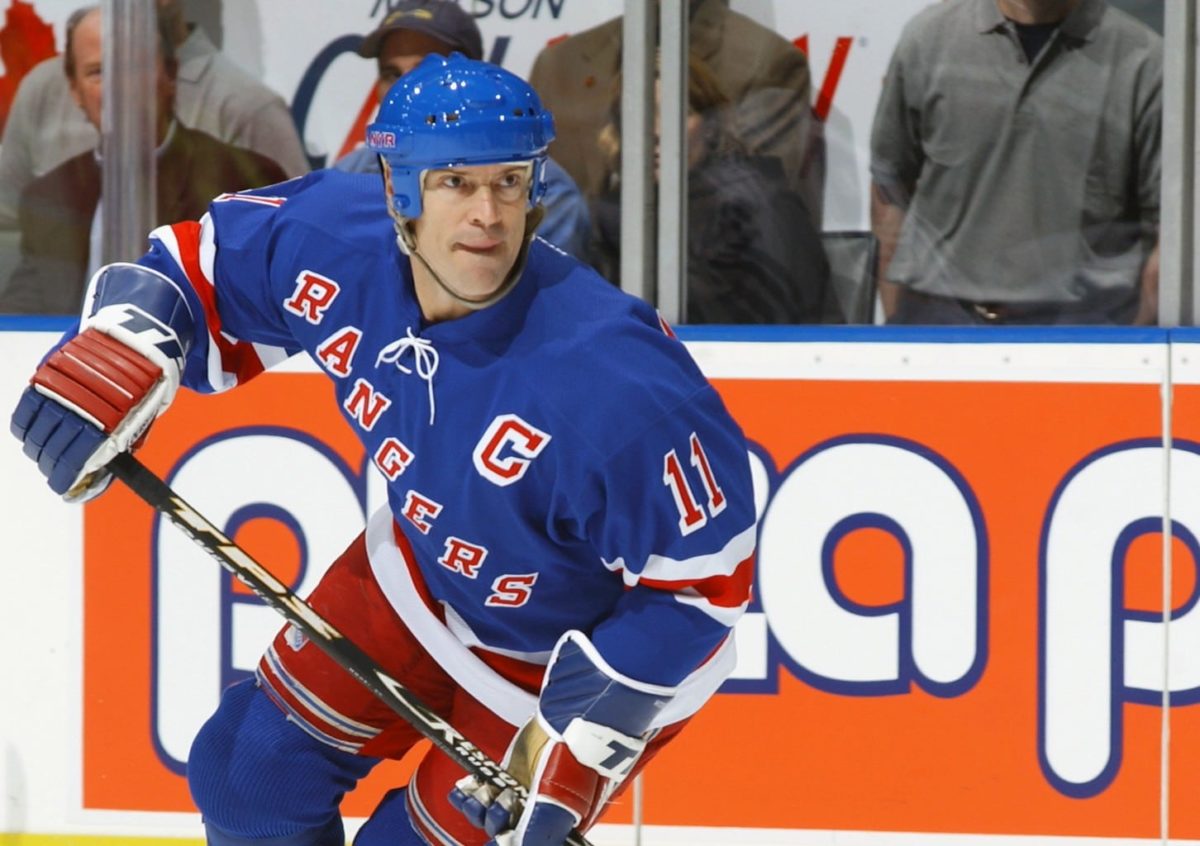
Unfortunately for Smith and the fanbase, Ascent owned a stake in the movie “Air Force One,” which starred Harrison Ford and went on to be a blockbuster. Avalanche ownership borrowed against the movie’s future earnings and matched the Rangers’ offer sheet, keeping Sakic in Denver – an outcome that Smith claimed two years ago he painfully saw coming to pass all along.
“I don’t want to say, ‘I knew,’ but I knew,” Smith said. “I knew exactly what would happen, even while everyone in (Rangers) ownership was telling me I was wrong. I knew it wouldn’t work. Even if it looks like you can’t afford to match, no NHL team can afford not to match. It would be choosing money over competing. If you do that, how are you going to sell your product? No team can do that.” (From ‘Ex-Rangers Exec Gives Inside Take On NHL Offer Sheet Drama’, New York Post, 7/20/19)
The Rangers’ second miss on Sakic would be their last on him as a player – but it wouldn’t be the end of the “what might have beens” regarding an alternate reality in which No. 19’s jersey would hang in the rafters of Madison Square Garden instead of the Avalanche’s Ball Arena (known as the Pepsi Center when Sakic played for the Avs).
Sakic Steals Ryan Graves From the Rangers
That’s because Joe Sakic the front-office executive – he was named the Avalanche’s executive vice president of hockey operations in May 2013 – has employed the vision and patience that served him so well on the ice to become one of the more successful personnel men in the NHL. Amongst his numerous shrewd moves in charge of the Avs (more on that later) was a seemingly minor trade with the Rangers on Feb. 26, 2018, when he acquired Ryan Graves for Chris Bigras in a swap of defensemen at the trade deadline.
Graves, a 6-foot-5, 220-pounder, was a fourth-round draft pick of the Blueshirts in 2013 who had shown promise with the Hartford Wolf Pack of the American Hockey League in 2016-17 with eight goals and 22 assists, but regressed the following season, totaling four goals and seven assists in 57 games. Bigras, meanwhile, had been a second-round pick of the Avs in 2013 and put up promising offensive numbers in juniors.

The trade ended up being completely lopsided – for Sakic and Colorado. Graves debuted with the Avs in 2018-19 and provided a harbinger of what was to come, scoring his first NHL goal against the Rangers on Jan. 4, 2019. Graves totaled five points and a plus-4 rating in 26 games that season.
The left-handed shot then proved to be a revelation in 2019-20, a combination of size, toughness and mobility on the blue line that resulted in a breakthrough effort. Graves recorded nine goals and 17 assists, and led the NHL with a plus-40 rating in 69 games of the pandemic-shortened season. He followed it up in 2020-21 by putting up 15 points and a plus-15 mark in 54 contests before Sakic was forced to trade Graves to the New Jersey Devils in 2021 to avoid potentially losing him for nothing in the Seattle Kraken expansion draft.
Bigras’ one goal and three assists for the Avs, coming in 46 games over parts of two seasons with Colorado, are his only points in the NHL. The Rangers gave up on him after two average seasons with Hartford, and he signed with the Philadelphia Flyers. Since last appearing in the NHL with the Avs, Bigras toiled for parts of five seasons in the AHL, then spent last season playing in the Kontinental Hockey League and Germany.
Graves, after two strong seasons with the Devils – he posted a plus-34 mark in 2022-23 – signed a six-year, $27 million contract with the Pittsburgh Penguins as a free agent July 1.
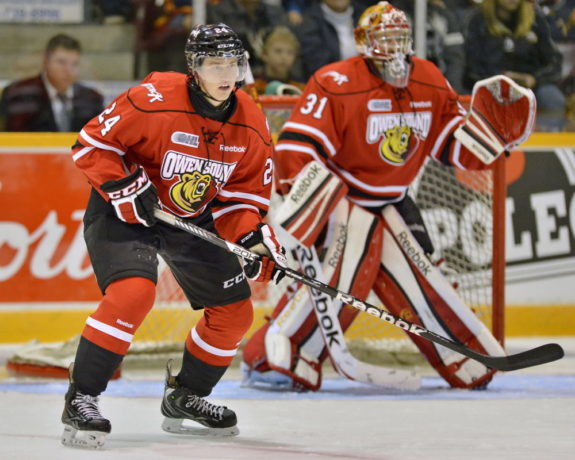
Sakic’s acquisition of Graves was a fleecing – the kind of envy-inducing move that has hardly been atypical for him during his time overseeing personnel matters in Denver.
Sakic Could Have Been Running the Rangers
Sakic has returned the Avs to prominence, presiding over a rise from a team that bottomed out with a 22-56-4 record in 2016-17 to 2022 Stanley Cup champions.
Sakic has done that in part with excellent trades such as the Graves acquisition, along with other masterpieces. There was the 2017 dealing of center Matt Duchene to the Ottawa Senators in a three-way trade involving the Nashville Predators that yielded defensemen Sam Girard and Bowen Byram, among others; the June 2018 pickup of goaltender Philipp Grubauer from the Washington Capitals; and the additions of defenseman Devon Toews and Josh Manson along with forwards Andre Burakovsky, Nazem Kadri, Valeri Nichushkin and Artturi Lehkonen.
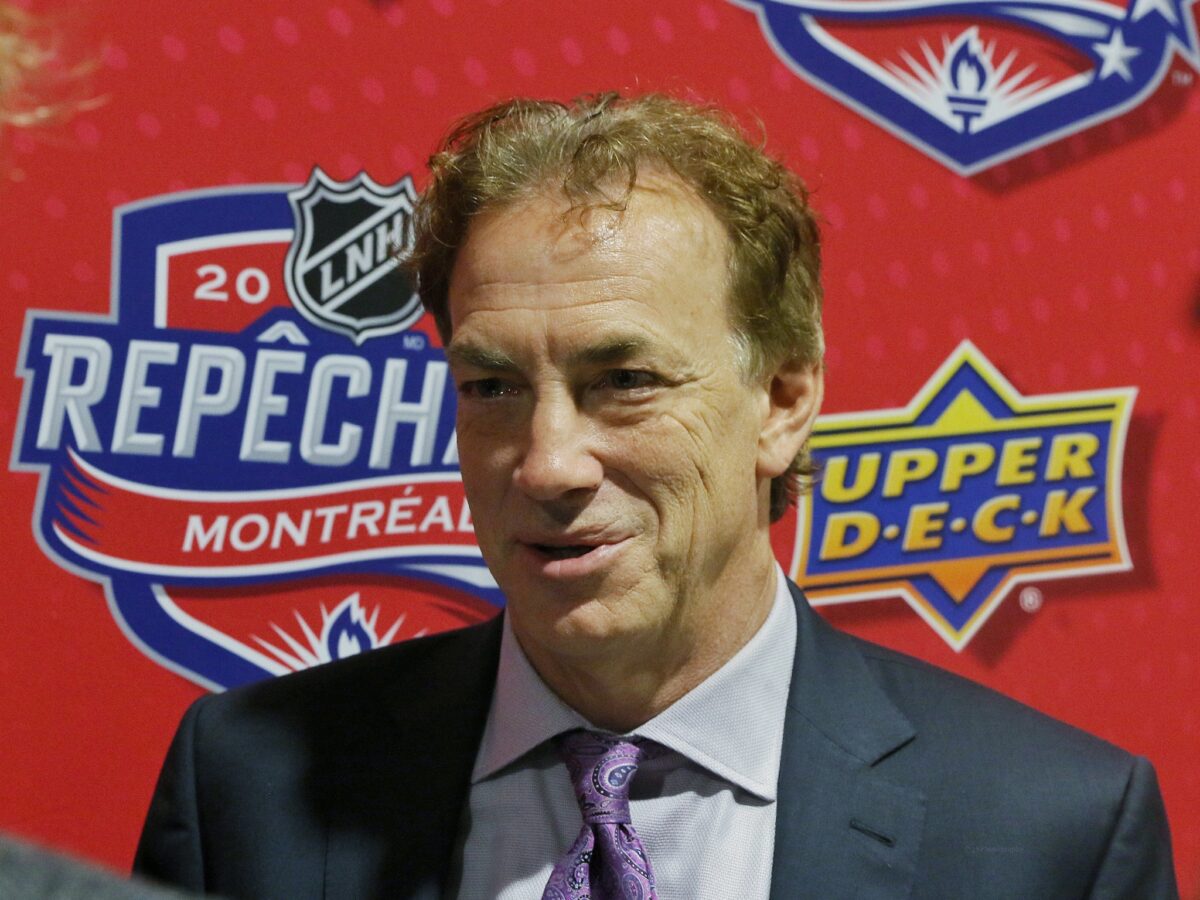
Sakic’s prescient work in the draft has been just as important. Picking Nathan MacKinnon first overall in 2013 in his first draft in charge was an easy call, but Sakic deserves full credit for selecting power forward Mikko Rantanen 10th in 2015 and 2022 Norris Trophy and Conn Smythe winner Cale Makar when he dropped to fourth in 2017.
While the Rangers were generally well-run during a three-year rebuild by former general manager Jeff Gorton – the Graves trade notwithstanding – Sakic is certainly coveted around the league, given his sterling reputation as one of the NHL’s foremost personnel executives after building the Avs into what they are today. Given his desire to take over the franchise for which he starred his entire career, it follows that the same scenario would have been entirely possible with the Rangers had former GM Phil Esposito handed in a card with a different name on it at the 1987 draft – or if Colorado decided not to match the Rangers’ 1997 offer sheet.
Blueshirts Missed Out on Benefits of Sakic Both On Ice and Off
No individual has been more instrumental to the success of the Colorado Avalanche since their inception than Sakic, the offensive engine and leader of the team during their Cup-winning days of two decades ago, who is now close to delivering another championship to the franchise which he defined during his playing career.
That’s an awful lot of value for a 15th-overall pick in the draft. Perhaps Rangers president and GM Chris Drury, Sakic’s teammate on the 2000-01 Stanley Cup champion Avs, will prove just as adept at eventually honing the Blueshirts into a powerhouse. At the very least, though, it’s difficult not to wonder how the Rangers would look had Sakic been in charge over the past decade.

Bossy’s drafting by the Islanders was critical in their rise to a dynasty that won four straight Stanley Cups, a pivotal moment that altered the direction of both the Isles and their hated rivals from Manhattan. Passing on Sakic wasn’t nearly as devastating for the Rangers, who did go on to win a Stanley Cup two years before Sakic and Colorado would capture their first.
Unlike Bossy, however, Sakic followed a path into the front office, making an extremely successful transition as he strengthened his stamp on the Avs. It’s not difficult to see how that could have been the Rangers instead of the Nordiques/Avalanche franchise.
Joe Sakic, career Blueshirt, easily could have been a reality. It wasn’t, though, and as a result, it’s the Avs and not the Rangers that continue to reap considerable benefits from Sakic – a point driven home when the Colorado GM calls Madison Square Garden looking to trade for a big left-side defenseman.
